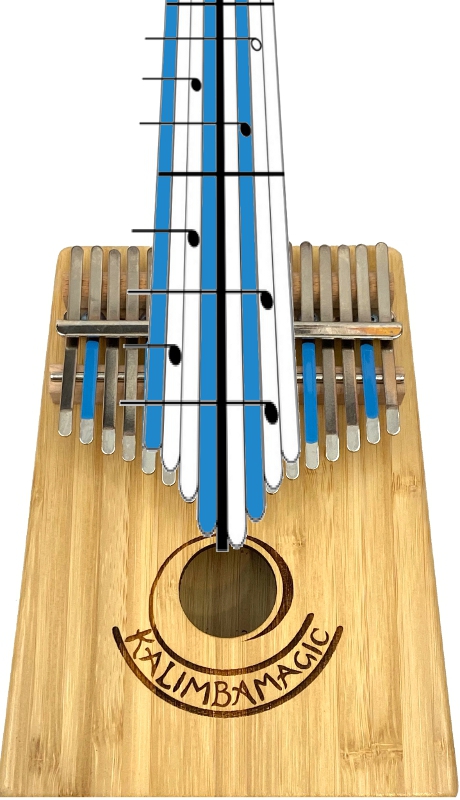The PDF Version of the Best Ever Book on 8-Note Kalimba Music is now available.
I wrote this book in 2006 when I was teaching 8-note kalimba to early elementary school children on Tuesdays, to inner city middle school kids on Wednesdays, and to high school aged youth in the downtown library on Thursdays. I had to create some very simple materials so the beginners could get it. And I found that they did get it. Even the 6 and 7-year-olds I worked with could readily follow the tablature up the page, even though it is not the direction the rest of the world reads musical notation. The experiences I had reaching these kids of various ages confirmed my belief that kalimba tablature was a great way to learn kalimba music.
By the way, those green arcs around the note symbols are the “sound icons” – when you click on one in the PDF download, it will request your web browser to download and play the sound file for the song. If your kalimba in in the key of C, you can even play along with the sound recording.
I also needed to create intermediate and advanced music to keep the interest of those preteens and teens. And I contend that you can create real music on these simple 8-Note kalimbas, music challenging enough to inspire people to run up and climb the great mountains these kalimbas can be.
Listen to “El Manisero” performed on the 8-Note Kalimba
The music in the recorded clip is based on the two measures of tablature above, the Cuban jazz classic “El Manisero.” But hear how far you can go from the basic song? Improvisation is so easy on the kalimba, and you always have permission to improvise.
Perhaps the coolest thing I experienced was to introduce the kalimba, an instrument of African origin and pride, to African Americans who are likely to have been cut off from much of their traditional African culture. And the second coolest thing: to instill an understanding of the greatness of African culture in people of non-African heritage. Kalimba can very naturally and innocently be a tool of racial understanding and racial healing.
It turns out that there are actually a great many types of kalimba out in the world that can use this download. Most notably, the 10-Note Kalimba in C is tuned just like the 8-Note in C… with the extra tines on the far left and far right.
Or: if you are feeling your 17-Note is a bit too much kalimba for you to handle, you could just focus for a while on learning the lower, inner 8-Notes. As you feel more comfortable playing music on those central notes, you can branch out to the higher notes, building on the foundation you have gained from the 8-Note kalimba work.

The 8-Note Kalimba in C forms the core of the 17-Note kalimba in C. That is useful in a whole bunch of different ways. Go be smart!
For more information on playing the 8-Note, see our “8-Note Kalimba Resource Page”.
We sell the Hugh Tracey 8-Note Kalimba, and also the Hugh Tracey 8-Note Kalimba with electronic pickup, made in South Africa.
We also sell the Goshen 8-Note Box Kalimba, which is made in West Virginia.


Sign up for our newsletter and free resources with your email address:
We pinky promise not to spam you and to only send good stuff.
 Christmas in July 2025
Christmas in July 2025 Patriotic and American Music for Kalimba
Patriotic and American Music for Kalimba